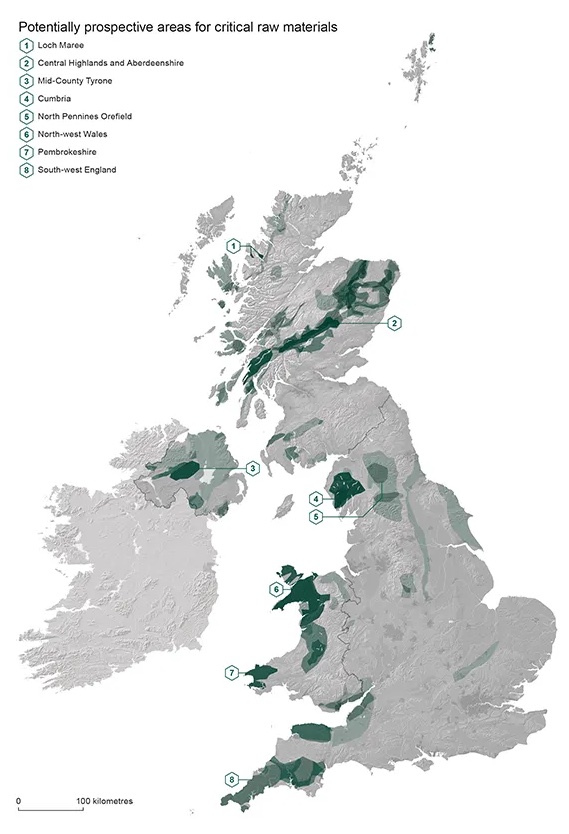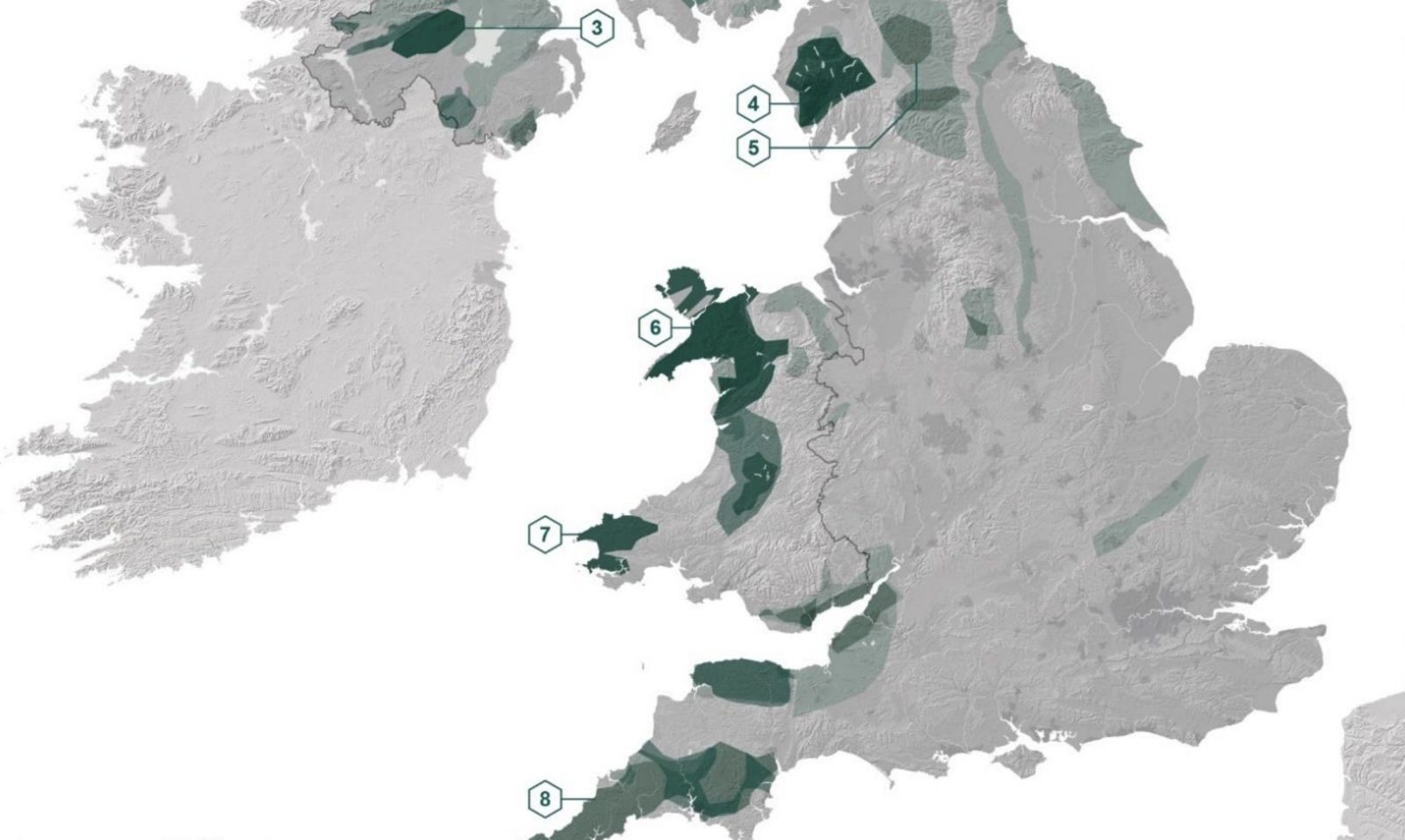Report identifies areas of the UK prospective for critical raw materials
The British Geological Survey (BGS) has identified several areas in the UK, including large areas of northwest Wales, that have the potential for critical raw materials (CRMs) such as lithium and graphite, according to a new report. The report, produced for the Critical Minerals Intelligence Centre (CMIC), is a national-scale assessment of the geological potential for CRMs in the UK. It represents one of the first steps in the UK Government’s critical minerals strategy, which aims to make the UK more resilient to disruption in critical mineral supply chains by accelerating the growth of domestic capability.
Key points from the report are:
- CRMs are minerals that are economically important and are at the greatest risk of supply chain disruption, like those needed for the clean energy transition such as batteries and semiconductors.
- The UK has 18 metals and minerals on its CRM list, with another six materials classed as having elevated criticality.
- The report identifies large parts of the country as prospective for CRMs, with eight areas identified as ‘particularly worthy’ of more research.
- BGS used a mineral systems approach to identify geological processes necessary to form CRM deposits and mapped these criteria against the UK’s available datasets, including maps of geology, soil and sediment geochemistry, and mineral occurrences.
- The report focuses on the geological evidence and does not consider potential constraints on development, for example where there are areas of outstanding beauty, villages and towns, or other environmental considerations.
- Other countries like Canada, the USA, Norway, Sweden, and Finland are also mapping their own geological potential for CRMs.

Areas of the UK considered potentially prospective for critical raw materials. Contains Ordnance Survey data © Crown copyright and database right 2023. Contains NEXTMap Britain elevation data from Intermap Technologies. BGS © UKRI
The report’s authors are keen to point out that much more research is required, and if prospectors find evidence of commercially viable CRM deposits, they will have to go through the planning process.



